 The mission of the Norwalk Conservatory of the Arts is to provide exemplary arts education to aspiring professional students, make a positive impact in the local community of arts, and create connections in the music, theatre, and film world that will last a lifetime.
The mission of the Norwalk Conservatory of the Arts is to provide exemplary arts education to aspiring professional students, make a positive impact in the local community of arts, and create connections in the music, theatre, and film world that will last a lifetime.
Founded in 2018 by industry creatives Danny and Ricky Loftus George with the goal of creating a college that was equal parts training and opportunity, it was initially known as the LINK Program and has developed into a full two-year college conservatory known as “NoCo” today. With close proximity to New York City, many students working on Broadway and television, a faculty of pivotal artists, small class sizes, and a curriculum built for today’s industry, it is envisioned to become a premier college of the arts.
The Conservatory plans to welcome its first class of two-year-program students to live and study at its Norwalk campus in August 2022.
NoCo and The City of Norwalk have also launched an annual Broadway in the Park summer outdoor concert series in Mathews Park, welcoming a slew of incredible performers to sing favorite Disney classics. With the beautiful park setting, food trucks and some surprises for kids, Broadway in the Park is a not-to-be missed summer event in Fairfield County.
NoCo additionally presents an annual haunted house adventure held in partnership with The SoNo Collection, with immersive events created in the spirit of Halloween. Produced by Broadway artists and crew members, these live-performance-art events can put a scare into even the bravest of adults, while also delighting young children, to get everyone in the Halloween spirit.
Co-Founder and President Danny George set the stage for how NoCo found its home in Norwalk.
“I have been working in higher education for the last 10 years. I’ve done quite a number of different jobs for a bunch of different schools. I work with over 40 colleges presently, doing everything from producing senior showcases, to bringing in new professors, to connecting them to the industry, to writing curriculum. You name it. And so, for the past five years, we’ve been building programming to launch a proper four-year college. It’s what was referred to as the LINK Program. It’s now obviously called ‘NoCo,’ as we picked Norwalk as our home.
We wanted to be close enough to New York City but still give students a safe and suburban atmosphere in which to learn, and in which to fail, and in which to succeed. So, Norwalk, Stamford and Bridgeport started to make the most sense.
 We felt that Bridgeport was too far away because our faculty is coming in from New York City. We’re bringing in big casting directors and agents and directors and choreographers and really big names. We want our students to work with the best, and so Norwalk won us over. It’s perfect. It’s quaint and still charming but also a big and growing town, and we wanted to be a part of that growth.
We felt that Bridgeport was too far away because our faculty is coming in from New York City. We’re bringing in big casting directors and agents and directors and choreographers and really big names. We want our students to work with the best, and so Norwalk won us over. It’s perfect. It’s quaint and still charming but also a big and growing town, and we wanted to be a part of that growth.
Ultimately Stamford has UConn and we thought Norwalk was really primed for a college or university. It’s getting to just about 100,000 residents and that is typically the point when you see a college or university enter a city. So, Norwalk is ready for something like this to accelerate its growth.
In Norwalk, we’ve built relationships and collaborations. We work with Stepping Stones Museum for Children quite a bunch. We’ve worked with the City. We work with the Wall Street Theater. We work with The SoNo Collection, which is a big partnership.
We have six different buildings. Our main building is called ‘The Flagship,’ and that is just for NoCo use. Right next to it, we have ‘The Vault,’ and that’s a partnership with Juice Media. There we teach kids how to shoot commercials. Next door, we use for classes and performances. Right across the street is the gymnastics and cheerleading academy where students learn how to tumble. So, our dancers learn how to tumble and our television and film students learn how to do stunt work. We work with Factory Underground in the back behind us. Students learn how to do voiceover work there. And also The Spot, which is a big dance studio space for us.
We’re about to start renovations on our dormitories. These kids are 18 years old and we need to make sure that they’re safe and secure. So, there’s ID access and resident advisors and all those things that a traditional school has. We don’t have a traditional meal plan but we are partnering with several restaurants in the downtown area. The idea is that students can use their card at certain restaurants, so it helps them a bunch. And our students get to eat some great food, too. And we’ve been very strategic about our partnerships there, about which restaurants make sense. We want to be inclusive of all types of cuisines and all dietary requirements. We want to make sure that we have something for everybody and proximity is important.
We are a true not-for-profit organization. We are here for every dollar to go towards helping kids who can’t afford to go to school. So, organizations that support that mission we tend to flock to and cling to. Especially restaurants.
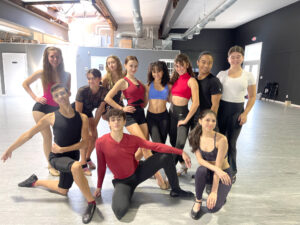 In terms of our student population, we do pre-college, which is a chance for high school students to see if this is a fit for them. And then we have full-time college. So year one, which starts in August 2022, we’ll have 50 students. About a third of those students are from pre-college, already enrolled. The other two-thirds will come from our national auditions tour. We offer two-year programs in three areas of study. Hopefully we will be granted accreditation to become a Bachelor’s program. If that happens, then we will expand to a four-year college.
In terms of our student population, we do pre-college, which is a chance for high school students to see if this is a fit for them. And then we have full-time college. So year one, which starts in August 2022, we’ll have 50 students. About a third of those students are from pre-college, already enrolled. The other two-thirds will come from our national auditions tour. We offer two-year programs in three areas of study. Hopefully we will be granted accreditation to become a Bachelor’s program. If that happens, then we will expand to a four-year college.
Our goal is to really reinvent the Wall Street corridor. We would like to just build an entire campus there. We think it’s the perfect area for a campus. Our goal is to have 1,000 students by year five, and about 3,000 students by year 10.
I’ve never built a college from scratch before and there are so many things that you can’t even imagine that just come up, that are so difficult. If you’re running a not-for-profit, raising finances and capital is always the biggest hurdle. But we know that our next big hurdle is going to be accreditation. Our funding is almost completely private. Our biggest way of fundraising has been big events, Broadway in the Park and the Haunted House. Those events generate quite a bit of income and they’re big fundraisers for us. So that is that is how we’ve been able to stay afloat. We’re about to bring on a director of development and that’s an exciting change in terms of opening up a lot more grants and public support.
We’ve actually been very fortunate in getting a lot of in-kind donations as well. Some have been incredibly generous. The SoNo Collection. Norwalk Hospital. Stop & Shop. Home Depot. It’s a lot of small things here and there but small acts of kindness lead to greater things. I think we’re getting the City to understand the value, and I think that a lot of individuals have been tremendous and understanding of that value. Sabrina Church and Jessica Vonashek are just the bee’s knees.
I have been an actor for the majority of my career in New York, on tour, in London and everywhere. And I started a program for postgraduate studies 10 years ago. That became big very quickly. We ended up having 6,000 students in New York City. We also opened in London, Paris and Amsterdam. I got sucked into higher education and I haven’t looked back. In the arts, there are not a lot of people who run programs that look like me, that are my age, that are my ethnic background. And so, to be able to highlight that and really focus on the next generation of artists that are similar, that excites me quite a lot.
You know, doing something like a Halloween haunted house seems trivial. But ultimately, to make it a full production, Broadway-caliber, that’s exciting, interesting and, to me, great!”
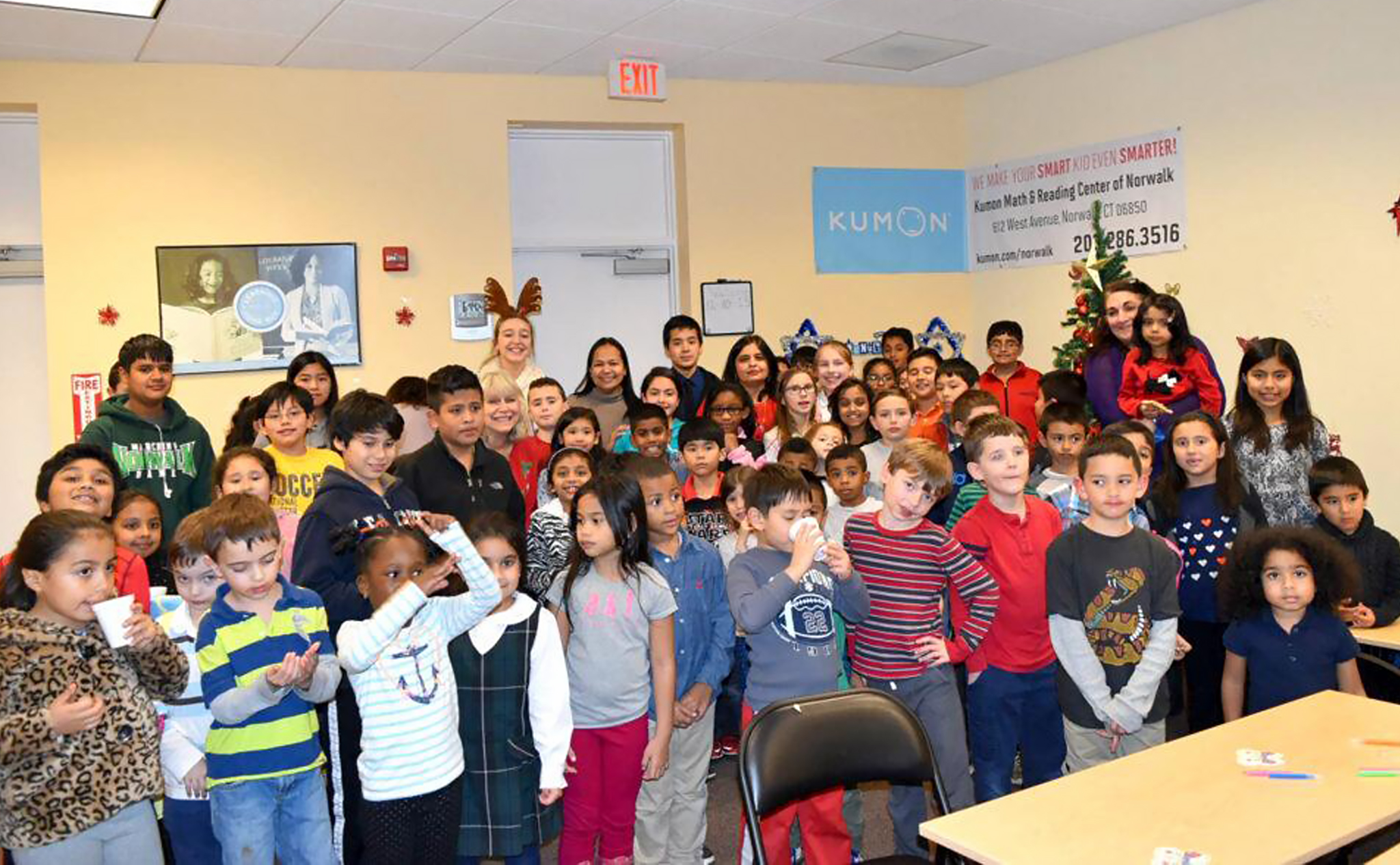
 For more than 50 years, Kumon’s after-school academic enrichment program has helped children achieve success worldwide. Kumon strives to instill in children the desire to achieve and the motivation to learn on their own. Students advance through the program at their own pace. The emphasis on individualized learning helps each student become focused, motivated and self-reliant.
For more than 50 years, Kumon’s after-school academic enrichment program has helped children achieve success worldwide. Kumon strives to instill in children the desire to achieve and the motivation to learn on their own. Students advance through the program at their own pace. The emphasis on individualized learning helps each student become focused, motivated and self-reliant. Dulce Gandhi, Director of the Kumon Math and Reading Center of Norwalk, talks about venturing out on her own to start a business that helps students learn independently.
Dulce Gandhi, Director of the Kumon Math and Reading Center of Norwalk, talks about venturing out on her own to start a business that helps students learn independently.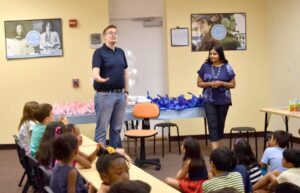 We now have about 20 to 30 students and five to seven instructors at any given time. We take students from three years-old to high school. They start by working with a teacher and two or three other kids until they are able to actually be working independently in the classroom. The goal of the Kumon program is to get each child working to their potential and to get them to grade-level as soon as possible. Then to get them working from six months to three years above grade-level. A kindergartener working with me for a year should be reading at second or third grade-level. Our math goals for students are to get them to multiplication by first grade, pre-algebra by fourth grade, and advanced algebra by sixth grade.
We now have about 20 to 30 students and five to seven instructors at any given time. We take students from three years-old to high school. They start by working with a teacher and two or three other kids until they are able to actually be working independently in the classroom. The goal of the Kumon program is to get each child working to their potential and to get them to grade-level as soon as possible. Then to get them working from six months to three years above grade-level. A kindergartener working with me for a year should be reading at second or third grade-level. Our math goals for students are to get them to multiplication by first grade, pre-algebra by fourth grade, and advanced algebra by sixth grade.

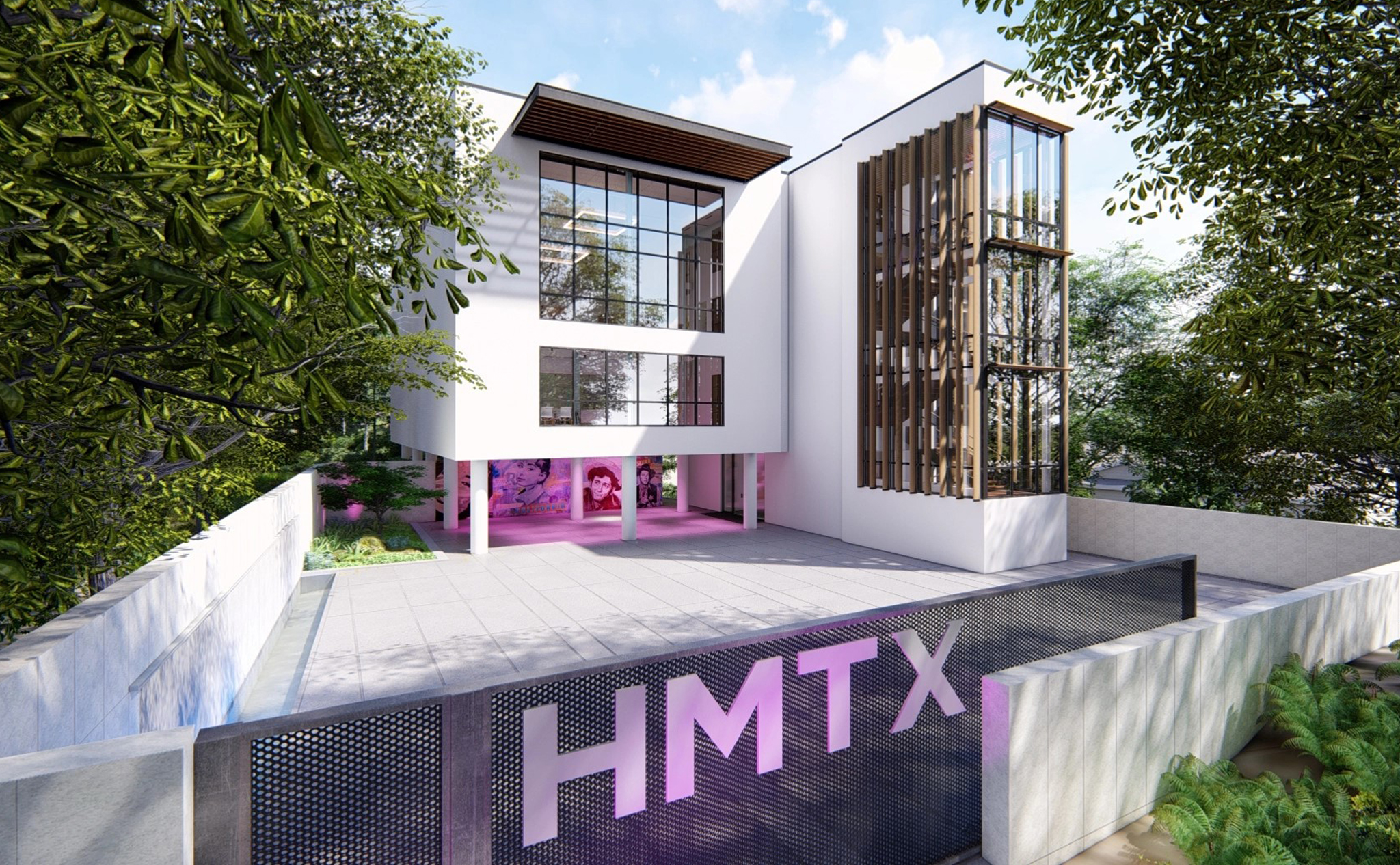
 “We’ve been in Connecticut since 1985. We outgrew the small office we were leasing in Greenwich, For about the same cost, we were able to buy a 1,200 square-foot building in Norwalk in 2000. That was our original building on our Oakwood Avenue campus that we still occupy. Then, we bought land next to us and built a very modern, beautiful building designed by Gensler, one of the leading architectural firms in the world. In 2016, we began the idea for our new world headquarters building, which was completed in 2022. It’s about 24,000 square feet in interior space and another 1,000 in outdoor rooftop space.
“We’ve been in Connecticut since 1985. We outgrew the small office we were leasing in Greenwich, For about the same cost, we were able to buy a 1,200 square-foot building in Norwalk in 2000. That was our original building on our Oakwood Avenue campus that we still occupy. Then, we bought land next to us and built a very modern, beautiful building designed by Gensler, one of the leading architectural firms in the world. In 2016, we began the idea for our new world headquarters building, which was completed in 2022. It’s about 24,000 square feet in interior space and another 1,000 in outdoor rooftop space. We think what we do inside the building is actually the most important thing. It really inspires creativity that the building looks out on nature. We’re next to Route 7 but we don’t see it from anywhere in the building. We see a forest; we see rocks; we see gardens; we see pathways, bridges and boardwalks. The new building outside is interconnected with our existing buildings. We have multiple water features that create both a sense of calm and also drown out the noise that might have been heard from the highway. So, it’s really a wonderful place for people to think, to be creative, to collaborate. And we hope that this building will be a beacon for the kind of the 21st century approach to business we have inside the building.
We think what we do inside the building is actually the most important thing. It really inspires creativity that the building looks out on nature. We’re next to Route 7 but we don’t see it from anywhere in the building. We see a forest; we see rocks; we see gardens; we see pathways, bridges and boardwalks. The new building outside is interconnected with our existing buildings. We have multiple water features that create both a sense of calm and also drown out the noise that might have been heard from the highway. So, it’s really a wonderful place for people to think, to be creative, to collaborate. And we hope that this building will be a beacon for the kind of the 21st century approach to business we have inside the building.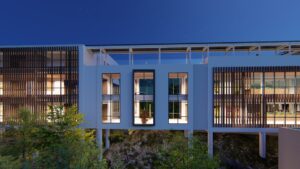 Community outreach is an important aspect of this building, and how we can use it to build our relationships with the community, whether philanthropic or hosting schools and other institutions that want to collaborate and have a place where they can come and have an evening event. We want it to become a place for celebrations of some of the accomplishments that our city has. We’ve loved Norwalk and we’ve been here for 25 years now. We are very indebted to the community that has provided us such a wonderful place to work. A lot of our employees live here in town as well. We really are happy here.
Community outreach is an important aspect of this building, and how we can use it to build our relationships with the community, whether philanthropic or hosting schools and other institutions that want to collaborate and have a place where they can come and have an evening event. We want it to become a place for celebrations of some of the accomplishments that our city has. We’ve loved Norwalk and we’ve been here for 25 years now. We are very indebted to the community that has provided us such a wonderful place to work. A lot of our employees live here in town as well. We really are happy here.

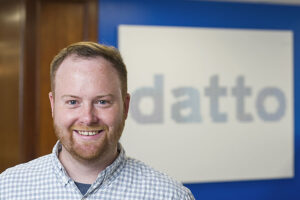 I grew up in Newtown, went off to college in Rochester, NY and came back home afterward to start Datto. When the startup literally outgrew my basement and became a real business, I ended up moving it to Norwalk because it wasn’t an enormous commute change for the employees. Subsequently, as the business grew, I found that Norwalk was a really good spot. It sits at an interesting intersection of being commutable from a really good radius inside and outside Connecticut.
I grew up in Newtown, went off to college in Rochester, NY and came back home afterward to start Datto. When the startup literally outgrew my basement and became a real business, I ended up moving it to Norwalk because it wasn’t an enormous commute change for the employees. Subsequently, as the business grew, I found that Norwalk was a really good spot. It sits at an interesting intersection of being commutable from a really good radius inside and outside Connecticut.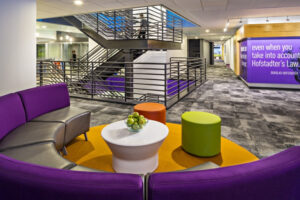 Datto solves data backup and disaster recovery problems for small- to medium-sized businesses. For us, attracting talent to the Connecticut area has been all about quality of life and the fact that you can find a good place to live that’s so much more affordable compared with New York City. There are a lot of folks that also want to leave the City and have a house with a lawn, a dog and all those things. So, it was very attractive in that sense to build the company in Norwalk. It’s a good balance because the City is still accessible but you can live a more suburban lifestyle.
Datto solves data backup and disaster recovery problems for small- to medium-sized businesses. For us, attracting talent to the Connecticut area has been all about quality of life and the fact that you can find a good place to live that’s so much more affordable compared with New York City. There are a lot of folks that also want to leave the City and have a house with a lawn, a dog and all those things. So, it was very attractive in that sense to build the company in Norwalk. It’s a good balance because the City is still accessible but you can live a more suburban lifestyle.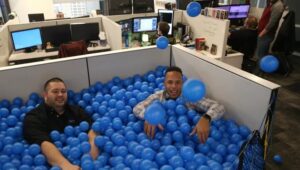 When I started the company in 2007, I bootstrapped the business, which meant I didn’t raise any money for the first six years. After that, I raised money from a venture capital firm up in Boston and subsequently from a firm in New York. Then eventually, I sold it to a private equity firm but still maintained a big ownership percentage and was still CEO. After 11 years, I stepped aside and my CFO became CEO. He then took the company public in 2020, which was always a long-term ambition of the business. In June of 2022, Datto acquired Infocyte, a Texas-based cyber threat detection and response company. The company was then merged into a firm called Kaseya. The Datto brand still exists. It’s now Datto, a Kaseya company.
When I started the company in 2007, I bootstrapped the business, which meant I didn’t raise any money for the first six years. After that, I raised money from a venture capital firm up in Boston and subsequently from a firm in New York. Then eventually, I sold it to a private equity firm but still maintained a big ownership percentage and was still CEO. After 11 years, I stepped aside and my CFO became CEO. He then took the company public in 2020, which was always a long-term ambition of the business. In June of 2022, Datto acquired Infocyte, a Texas-based cyber threat detection and response company. The company was then merged into a firm called Kaseya. The Datto brand still exists. It’s now Datto, a Kaseya company.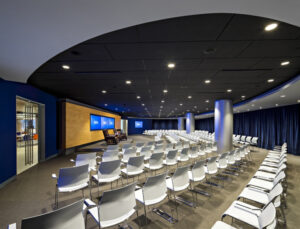 When starting s business here, the Connecticut Innovations folks can be really helpful and some of the DECD loans that you can get for hiring and building businesses in Connecticut are really good. We were able to do that and it was very helpful for Datto. We also made sure to work with local banks. You’d be surprised as a founder how much local institutions are willing to rally and support you and want to see you succeed. That’s helpful. It’s actually sometimes a lot better to become the big fish in the small pond than trying to stand out in say, San Francisco, which is impossible. Going public and when Kaseya became involved, they saw a fully formed company.
When starting s business here, the Connecticut Innovations folks can be really helpful and some of the DECD loans that you can get for hiring and building businesses in Connecticut are really good. We were able to do that and it was very helpful for Datto. We also made sure to work with local banks. You’d be surprised as a founder how much local institutions are willing to rally and support you and want to see you succeed. That’s helpful. It’s actually sometimes a lot better to become the big fish in the small pond than trying to stand out in say, San Francisco, which is impossible. Going public and when Kaseya became involved, they saw a fully formed company.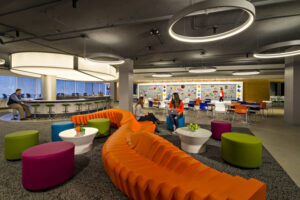 Right now, I run a med-tech company that makes of all kinds of things. Like a toilet seat that can take your blood pressure reading, which is kind of wild. There’s an enormous market and opportunities for devices to manage chronic conditions and the whole process where healthcare is moving to the home. I continue to invest in businesses in the greater Connecticut area, including a cyber security company called Zorus that is based in Norwalk.
Right now, I run a med-tech company that makes of all kinds of things. Like a toilet seat that can take your blood pressure reading, which is kind of wild. There’s an enormous market and opportunities for devices to manage chronic conditions and the whole process where healthcare is moving to the home. I continue to invest in businesses in the greater Connecticut area, including a cyber security company called Zorus that is based in Norwalk.

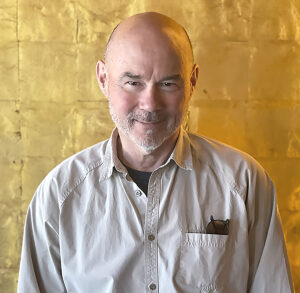 Snyder Group is focused on fine-tuning every part of the marketing and sales funnel for their clients. They believe in the complete integration of marketing, sales, and technology teams. The group is made up of strategists, designers, copywriters and coders who share an interdisciplinary approach to achieving objectives.
Snyder Group is focused on fine-tuning every part of the marketing and sales funnel for their clients. They believe in the complete integration of marketing, sales, and technology teams. The group is made up of strategists, designers, copywriters and coders who share an interdisciplinary approach to achieving objectives.

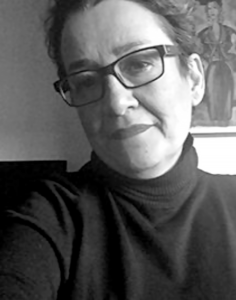 NEF+DA founder Irina Simeonova talks about discovering passion for fashion and building a creative business in Norwalk.
NEF+DA founder Irina Simeonova talks about discovering passion for fashion and building a creative business in Norwalk. 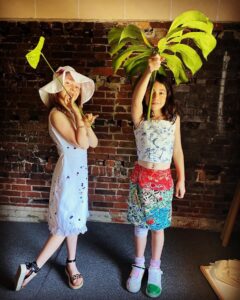 In the beginning, I made the classes separate by age. Later, I discovered this didn’t make sense because they all love being together – the young ones with the older ones. It’s such a pleasant experience. They come here and they’re happy. There is this constant sense of happiness and they learn a lot of things.
In the beginning, I made the classes separate by age. Later, I discovered this didn’t make sense because they all love being together – the young ones with the older ones. It’s such a pleasant experience. They come here and they’re happy. There is this constant sense of happiness and they learn a lot of things. I have never done anything in my life but fashion design. The students that come to me are the same type of people. They just love to design and make things. I actually tell them, ‘I’m not your teacher. I’m just one of the kids. I just happen to know a little more than you know.’ I’m teaching the gang but you know, we like playing together. When they’re young, they absorb super-fast and they make my life worthwhile.
I have never done anything in my life but fashion design. The students that come to me are the same type of people. They just love to design and make things. I actually tell them, ‘I’m not your teacher. I’m just one of the kids. I just happen to know a little more than you know.’ I’m teaching the gang but you know, we like playing together. When they’re young, they absorb super-fast and they make my life worthwhile. What’s nice about Norwalk is that it’s very close to New York. When you need supplies, you can just get on a train. It takes an hour and five minutes. It’s also interesting for my students. I do field trips with them and take them to all the events. I teach at Parsons School of Design. So, we are all connected. Being close to New York City makes a big difference. You can actually bring the culture here to Norwalk and it feels like you’re in New York.
What’s nice about Norwalk is that it’s very close to New York. When you need supplies, you can just get on a train. It takes an hour and five minutes. It’s also interesting for my students. I do field trips with them and take them to all the events. I teach at Parsons School of Design. So, we are all connected. Being close to New York City makes a big difference. You can actually bring the culture here to Norwalk and it feels like you’re in New York.


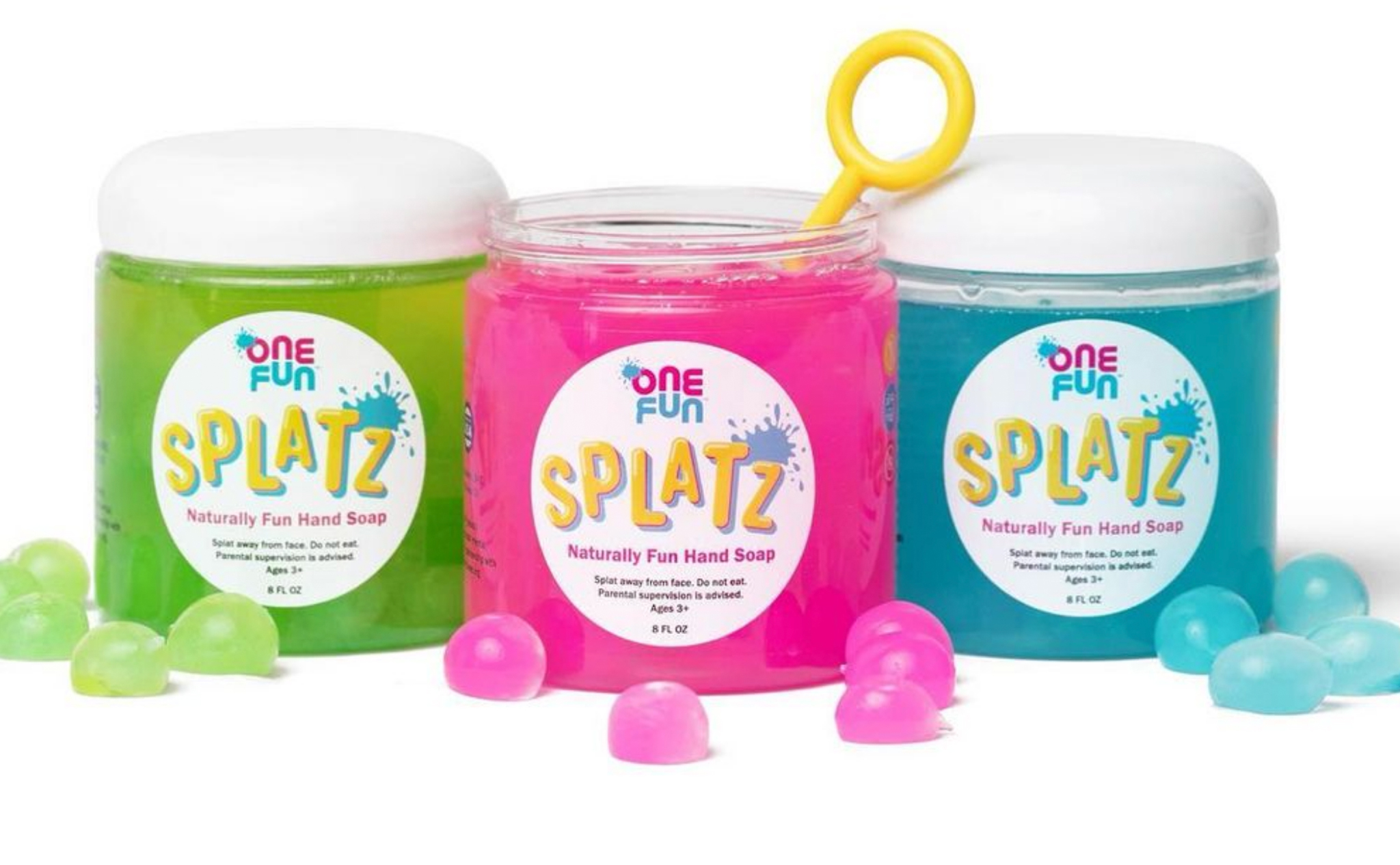
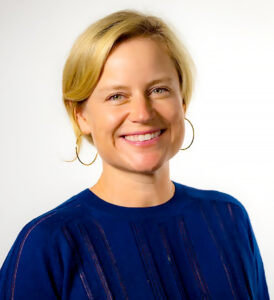 Founder and CEO Alli DiVincenzo talks about how ideas and innovation are working hand-in-hand in Norwalk.
Founder and CEO Alli DiVincenzo talks about how ideas and innovation are working hand-in-hand in Norwalk. In November 2020, we launched SPLATZ which, at that point, were made by hand. Thanks to helpful feedback from our customers, we continued to tweak and improve our formulas and offerings. Today, SPLATZ is in homes across the U.S., improving lives one bursting pod at a time. We’ve also expanded our product line to include SPLODEZ, an exploding bubble bath and body wash.
In November 2020, we launched SPLATZ which, at that point, were made by hand. Thanks to helpful feedback from our customers, we continued to tweak and improve our formulas and offerings. Today, SPLATZ is in homes across the U.S., improving lives one bursting pod at a time. We’ve also expanded our product line to include SPLODEZ, an exploding bubble bath and body wash.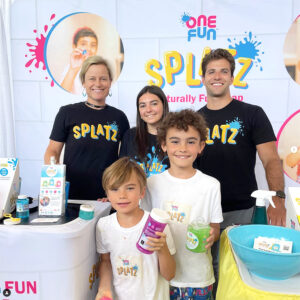 We’re a very small team. We have three full-time employees; myself and then two in operations in the lab. We also have some part-time line workers. Finding consistent help to work in the lab has been kind of challenging but it’s been a really interesting adventure. Just the fact that we’re selling a hand soap during a pandemic and that our mission is to help families and kids have better hygiene routines and enjoy the process. We’ve heard from a lot of our customers that it has, in fact, changed their habits and routines and their general feelings about hand-washing. So, in that sense, we feel like we’ve really made progress and are hitting our mission and our goals.
We’re a very small team. We have three full-time employees; myself and then two in operations in the lab. We also have some part-time line workers. Finding consistent help to work in the lab has been kind of challenging but it’s been a really interesting adventure. Just the fact that we’re selling a hand soap during a pandemic and that our mission is to help families and kids have better hygiene routines and enjoy the process. We’ve heard from a lot of our customers that it has, in fact, changed their habits and routines and their general feelings about hand-washing. So, in that sense, we feel like we’ve really made progress and are hitting our mission and our goals.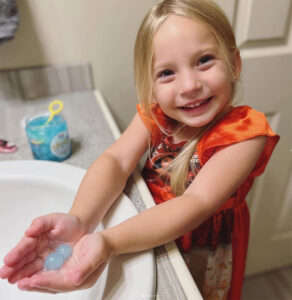 We’re really excited for this next stage of growth. We’re looking forward to the next fundraising round and maybe getting in some consumer packaged goods veterans who’ve done this before to help advise us through the process. But we’re young, we’re nimble, we want to learn and we’re just really excited to be to be in Norwalk. I love that we’re walking distance from Metro North. I love that you can walk to SoNo Baking Company or Spacecat Brewing. The guys that moved down from Boston didn’t know what to expect and now they’re like, ‘Norwalk’s cool!’ On our Instagram, I recently posted before-and-after photos of our little office space. We took it from this really gritty, old space and made it into one very happy, fun front office.”
We’re really excited for this next stage of growth. We’re looking forward to the next fundraising round and maybe getting in some consumer packaged goods veterans who’ve done this before to help advise us through the process. But we’re young, we’re nimble, we want to learn and we’re just really excited to be to be in Norwalk. I love that we’re walking distance from Metro North. I love that you can walk to SoNo Baking Company or Spacecat Brewing. The guys that moved down from Boston didn’t know what to expect and now they’re like, ‘Norwalk’s cool!’ On our Instagram, I recently posted before-and-after photos of our little office space. We took it from this really gritty, old space and made it into one very happy, fun front office.”

 East Coast Kombucha Company, located in South Norwalk, is an artisanal-brewer of organic, probiotic-packed kombucha, which is fermented tea. Partners Steve Gaskin, Glynise Gaskin and Claudia Duvall are committed to brewing and distributing kegs, bottles and cans of the best-tasting kombucha available using only the finest ingredients (locally sourced whenever possible) – with a portion of their sales being donated to local charities. Their mission is to make a positive impact on their community, their customers’ lives, their employees, and on the environment.
East Coast Kombucha Company, located in South Norwalk, is an artisanal-brewer of organic, probiotic-packed kombucha, which is fermented tea. Partners Steve Gaskin, Glynise Gaskin and Claudia Duvall are committed to brewing and distributing kegs, bottles and cans of the best-tasting kombucha available using only the finest ingredients (locally sourced whenever possible) – with a portion of their sales being donated to local charities. Their mission is to make a positive impact on their community, their customers’ lives, their employees, and on the environment.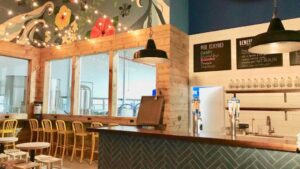 The spectacular brewery and tap room is located in a historic textile factory built in 1903 – just steps away from the SoNo train station and a few minutes from The SoNo Collection shopping center. For decades, this building housed the Park-Kit Safety Equipment Company, which manufactured first-aid kits.
The spectacular brewery and tap room is located in a historic textile factory built in 1903 – just steps away from the SoNo train station and a few minutes from The SoNo Collection shopping center. For decades, this building housed the Park-Kit Safety Equipment Company, which manufactured first-aid kits.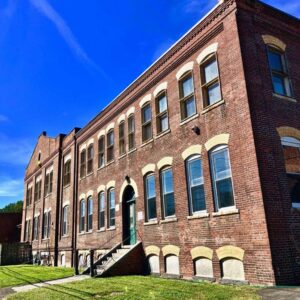 We looked at a bunch of places on the I-95 corridor. As a manufacturer, being near the highway was important to us. Norwalk is good for us because of the location and the vibe. We like the history of Norwalk, all the past generations that have done what we do here. I’m from Detroit, so there’s a lot of that manufacturing history here that I like personally.
We looked at a bunch of places on the I-95 corridor. As a manufacturer, being near the highway was important to us. Norwalk is good for us because of the location and the vibe. We like the history of Norwalk, all the past generations that have done what we do here. I’m from Detroit, so there’s a lot of that manufacturing history here that I like personally.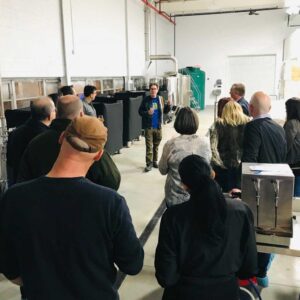 Our tasting room is another option. Getting people to come here and see the building. It’s such an incredible, amazing place to get excited about. Being able to show people this very unique production process that’s unlike anything else because you’re actually growing something. So, I think these things are the right combination. It’s a nice to have people come on a Friday or Saturday afternoon and experience something very different. And hopefully have them leave with something that’s going to help them with their life and promote better health and well-being.
Our tasting room is another option. Getting people to come here and see the building. It’s such an incredible, amazing place to get excited about. Being able to show people this very unique production process that’s unlike anything else because you’re actually growing something. So, I think these things are the right combination. It’s a nice to have people come on a Friday or Saturday afternoon and experience something very different. And hopefully have them leave with something that’s going to help them with their life and promote better health and well-being. The ideal kombucha consumer? That’s a good question. We’re really still trying to figure that out because it’s all over the place a lot of times. I think it skews a little bit more toward females 18 to 40. We have a lot of a lot of college-age women come in with their moms, and they say, ‘Hey Mom, try this!’ Then very health-conscious people who take care of their themselves. Kombucha is going to rebalance your gut system. It’s going to help with your immune system and it’s just going to detoxify you and hopefully make you feel better. Without the calories and without the artificial things.
The ideal kombucha consumer? That’s a good question. We’re really still trying to figure that out because it’s all over the place a lot of times. I think it skews a little bit more toward females 18 to 40. We have a lot of a lot of college-age women come in with their moms, and they say, ‘Hey Mom, try this!’ Then very health-conscious people who take care of their themselves. Kombucha is going to rebalance your gut system. It’s going to help with your immune system and it’s just going to detoxify you and hopefully make you feel better. Without the calories and without the artificial things.

 The mission of the Norwalk Conservatory of the Arts is to provide exemplary arts education to aspiring professional students, make a positive impact in the local community of arts, and create connections in the music, theatre, and film world that will last a lifetime.
The mission of the Norwalk Conservatory of the Arts is to provide exemplary arts education to aspiring professional students, make a positive impact in the local community of arts, and create connections in the music, theatre, and film world that will last a lifetime. We felt that Bridgeport was too far away because our faculty is coming in from New York City. We’re bringing in big casting directors and agents and directors and choreographers and really big names. We want our students to work with the best, and so Norwalk won us over. It’s perfect. It’s quaint and still charming but also a big and growing town, and we wanted to be a part of that growth.
We felt that Bridgeport was too far away because our faculty is coming in from New York City. We’re bringing in big casting directors and agents and directors and choreographers and really big names. We want our students to work with the best, and so Norwalk won us over. It’s perfect. It’s quaint and still charming but also a big and growing town, and we wanted to be a part of that growth. In terms of our student population, we do pre-college, which is a chance for high school students to see if this is a fit for them. And then we have full-time college. So year one, which starts in August 2022, we’ll have 50 students. About a third of those students are from pre-college, already enrolled. The other two-thirds will come from our national auditions tour. We offer two-year programs in three areas of study. Hopefully we will be granted accreditation to become a Bachelor’s program. If that happens, then we will expand to a four-year college.
In terms of our student population, we do pre-college, which is a chance for high school students to see if this is a fit for them. And then we have full-time college. So year one, which starts in August 2022, we’ll have 50 students. About a third of those students are from pre-college, already enrolled. The other two-thirds will come from our national auditions tour. We offer two-year programs in three areas of study. Hopefully we will be granted accreditation to become a Bachelor’s program. If that happens, then we will expand to a four-year college.
